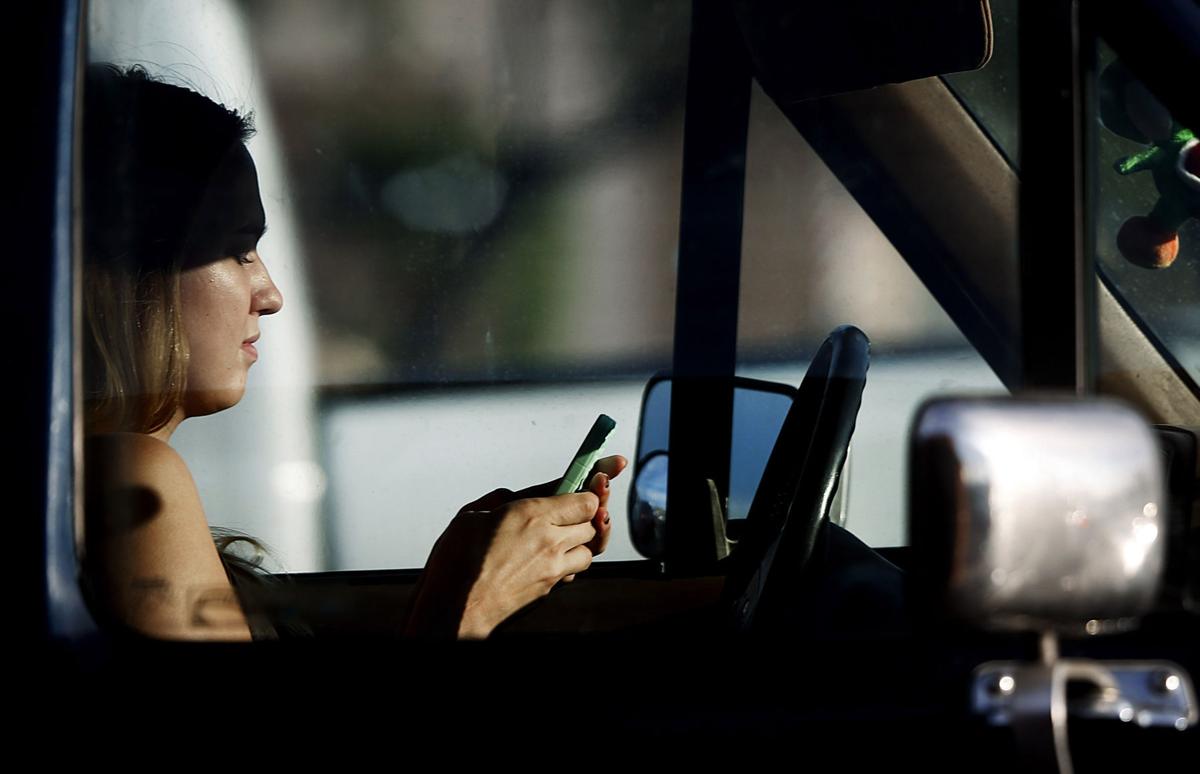As it stands, Pima County is a hodgepodge of different rules regarding texting and other uses of electronic devices while driving.
Marana has no specific ordinance limiting or banning motorists’ cellphone use, though officers can certainly pull people over for the erratic driving it sometimes leads to, according to town officials,
Late last year, the Oro Valley Town Council approved an ordinance mandating the use of hands-free electronic devices while driving with only a handful of exemptions and incremental fines for each violation. It also designated violations a primary offense, meaning an officer can pull someone over just for violating that law.
The Tucson City Council passed a similar ordinance in March, but violations were designated as secondary offenses, meaning an officer would have to observe a driver violating another law to stop them. Councilwoman Regina Romero pushed for that distinction, citing concerns that the measure could be used as cover for racial profiling by police officers.
At $250, first-times fines are also five times those in Oro Valley.
Until last week, the state of Arizona had no ban on the practice, which has been cited as a factor in rising vehicle fatalities in recent years. However, Gov. Doug Ducey just signed a bill banning the practice among new drivers, but leaving most everyone else unaffected, leaving just Montana as the only state with no statewide ban of any kind.
And finally, there’s Pima County. Its current ordinance, passed unanimously just shy of a year ago, makes texting while driving a primary offense, but it has broader exemptions. One cited by two county officials as particularly problematic is the fact that drivers can still “initiate, receive or engage in voice communication.”
From the outside looking in, distinguishing between sending a text and dialing a number is no easy task, according to Sheriff Mark Napier.
The Road Runner requested data detailing enforcement in unincorporated Pima County of the current ordinance and it was not received by deadline, though Napier said his department has not “issued a good number of tickets.” Just 50 tickets were issued in the first two years of Tucson’s 2012 texting ordinance, the Star has previously reported.
A new county ordinance, modeled after Oro Valley’s and set for consideration by the supervisors Tuesday, could bring some jurisdictional consistency.
Supervisor Sharon Bronson, who asked for the item to be put on the Tuesday agenda, told the Road Runner the current ordinance isn’t enough to address what she described as a major public health issue. She also doesn’t except the Legislature to take more sweeping action on the matter anytime soon.
“Multitasking while driving isn’t acceptable,” she said, adding later: “We’ve got to solve our own problems. We can’t depend on federal or state government.”
Bronson and Napier advocated for making violations a primary offense.
None of the other four supervisors returned calls Friday for comment on the ordinance by deadline. Brendan Lyons, an anti-distracted driving advocate who was seriously injured by a driver taking a call in 2013, said it was “incredible” that the county could become the third local jurisdiction to adopt a hands-free ordinance.
Beyond requiring that any electronic device used by drivers be hands-free, the new ordinance makes no exemptions for drivers stopped at lights or signs, as the current ordinance does, though it does allow for emergency calls. The measure would come into effect 30 days after passage.
Napier said the rollout in Oro Valley, where its ordinance has been in effect since January, offers some helpful lessons about what to do if the measure passes.
The town is still in the public education phase of implementation, and officers are directed to issue warnings to violators, and they have done so with gusto, according to Oro Valley Lt. Chris Olson.
Since January, officers have issued nearly 800 warnings to drivers and likely won’t start issuing citations for at least several more months. Olson had expected to have 1,000 by now, but said his officers are already “having a harder time” spotting violations.
“To have a warning period makes a lot of sense,” Napier said.
He said he understands concerns about law enforcement overreach and over-policing, but added that even after the warning period — if the ordinance is approved — his deputies would not be “overzealous in their enforcement.”
“We have no interest in that,” he said. “What we want to do is increase awareness.”
Check out the poll in the online version of this story to weigh in.
DOWN THE ROAD
- Starting Monday at 9 a.m., surveyors will be at work along Grant Road between North Edith Boulevard and North Venice Place. During the work, which will go through Friday and end daily at 4 p.m., there will be intermittent lane closures and traffic shifts. The surveying is a part of the third and fourth phases, which are still in design, of the Grant Road Improvement Project.
- Also starting Monday, the right-hand turn lane on northbound South Houghton Road just south of Old Vail Road will be closed.





